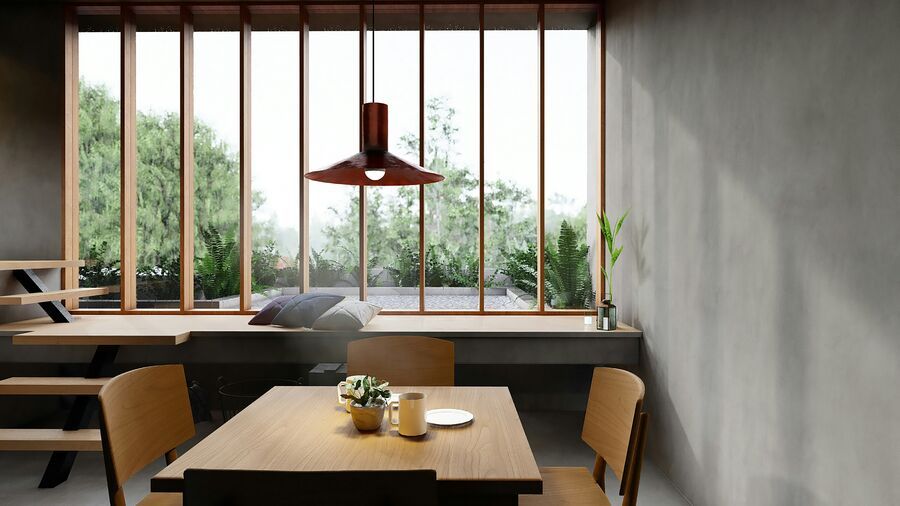In a world where perfection seems to be the norm, Wabi-Sabi emerges like a breath of fresh air, reminding us of the beauty found in imperfection and transience. This ancient Japanese philosophy celebrates simplicity, rusticity and a deep connection with nature, offering a refreshing perspective on how we perceive and design our environment. Join us as we explore the principles of Wabi-Sabi and discover how they can transform our spaces and our lives.
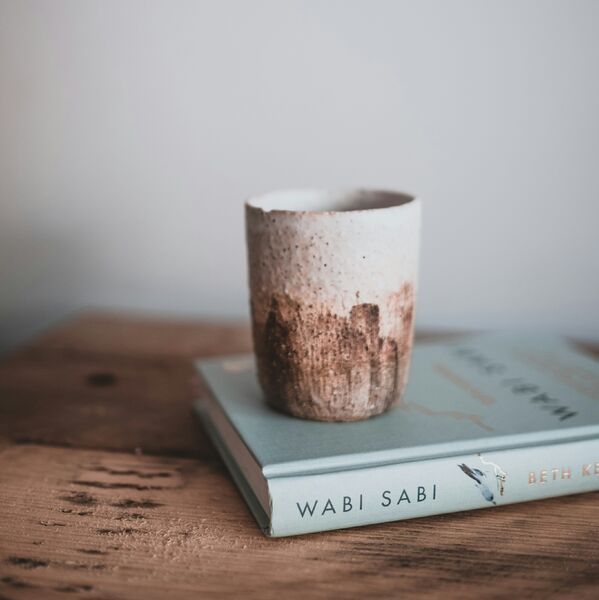
The philosophy of wabi-sabi
Wabi-Sabi
Definition
Wabi-Sabi is a complex and subtle notion of Japanese aesthetics that transcends simple concepts of beauty. It embodies a profound philosophy of life that celebrates the beauty found in imperfection, simplicity and transience. At the heart of Wabi-Sabi are two aesthetic ideals: Wabi and Sabi. Wabi evokes rustic simplicity, austerity and quiet solitude, while Sabi celebrates the patina of time, authenticity and the beauty that emerges from imperfection.
Origins and history of the concept
The roots of Wabi-Sabi go back to the time of Zen Buddhism and Taoism in Japan, when modesty, simplicity and humility were valued. It was only later, in medieval times, that the concept of Wabi-Sabi began to emerge in the visual arts and Japanese culture. Zen monks adopted Wabi-Sabi in their aesthetic, favouring simplicity in their lifestyle and in their artistic creations. Over time, the concept has spread to other artistic fields such as pottery, calligraphy, painting and architecture, becoming an integral part of Japanese culture.
The importance of Wabi-Sabi in Japanese culture
Wabi-Sabi is deeply rooted in Japanese culture, manifesting itself through a variety of practices and traditions. One of the most emblematic examples is Kintsugi, the art of repairing broken pottery with gold or silver to highlight scars rather than hide them. This practice symbolises the beauty of resilience, acceptance of impermanence and transformation.
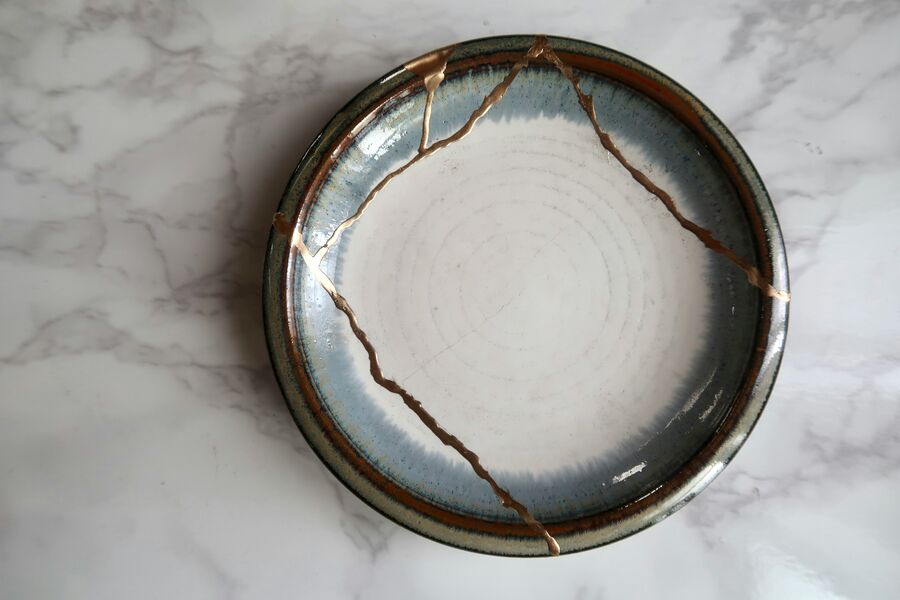
The art of Kintsugi
Similarly, the Japanese tea ceremony, Chanoyu, embodies the principles of Wabi-Sabi through its deliberate simplicity, attention to detail and respect for the present moment. Every gesture in the preparation and tasting of tea is imbued with calm, modesty and gratitude towards nature and the elements that surround us.
The principles of Wabi-Sabi
Acceptance of imperfection and appreciation of simplicity
At the heart of Wabi-Sabi lies the acceptance of imperfection as an essential element of beauty. In contrast to the relentless quest for perfection that often characterises modern society, Wabi-Sabi invites us to see beauty in things that are imperfect, asymmetrical and worn by time. For example, a Japanese-style garden, with its winding paths and naturally laid stones, reflects the Wabi-Sabi aesthetic. In such a garden, beauty emanates from spontaneity and simplicity, rather than rigidity and perfection. Similarly, a minimalist interior space, stripped of anything superfluous, is appreciated for its purity and tranquillity.
Understanding the ephemeral
Another fundamental principle of Wabi-Sabi is the recognition that life is ephemeral. Everything is constantly changing, nothing is permanent. This awareness encourages us to savour each moment to the full and to appreciate the beauty in transience. The flowers that bloom and then fade, the seasons that change, the moments of joy and sadness that come and go: these are all part of the richness of existence. By understanding and accepting the ephemeral, we can find deep gratitude for every experience and encounter in our lives.
Applying Wabi-Sabi to everyday life
Wabi-Sabi is not just an aesthetic, it is also a philosophy of life. It encourages us to adopt a simpler, more authentic way of life, in harmony with nature. This is reflected in the way we live, work, create and connect with others. By simplifying our lives, reducing material and mental clutter, we can find greater inner peace and deep satisfaction.
In our relationships with others, Wabi-Sabi invites us to embrace our imperfections and those of others, to practise compassion and kindness rather than judgement and criticism. By accepting and celebrating the diversity and complexity of each individual, we can build more authentic and enriching relationships.
Wabi-Sabi furnishings
Use of natural materials
Wabi-Sabi design emphasises a deep connection with nature. When we apply these principles, we favour the use of raw, natural materials such as wood, stone, bamboo and linen. These materials create a warm, authentic atmosphere in the space, while reminding us of our intimate connection with the natural world around us. The varied textures and imperfections of the materials add richness and authenticity to the overall aesthetic.
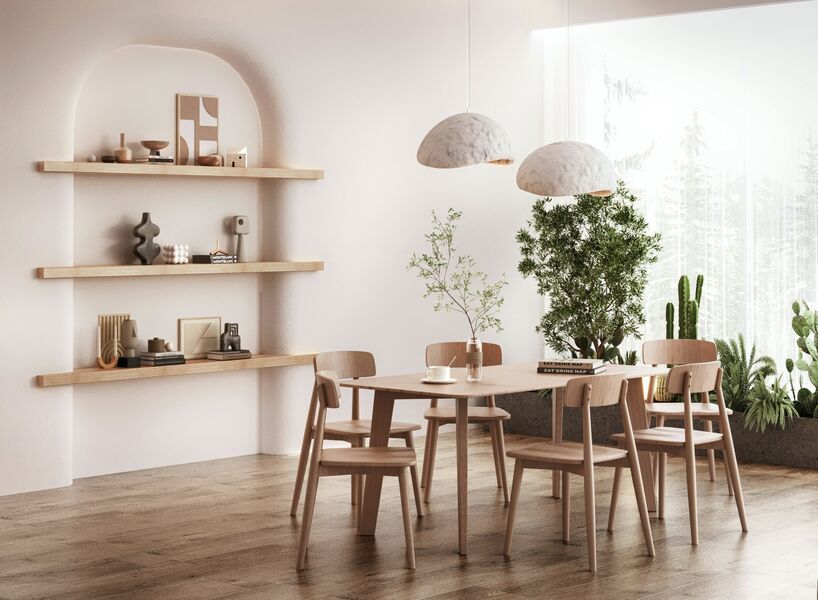
The use of wood and plants in interior design
For example, a solid wood dining table offers a solid presence and rustic beauty that evokes tranquillity and conviviality. Similarly, a walnut sideboard, with its natural grain and irregularities, adds a touch of elegance and character to a space, while recalling the beauty of simplicity and authenticity.
The right colours
The colours used in a Wabi-Sabi space are soft, subtle and inspired by nature. Earthy tones such as beige, grey, moss green and brown are favoured for their ability to create a calm and soothing atmosphere. Faded and weathered shades evoke the passage of time and add a touch of mystery and depth to the space. The use of natural colours creates continuity with the outside environment, strengthening the link between indoors and outdoors.
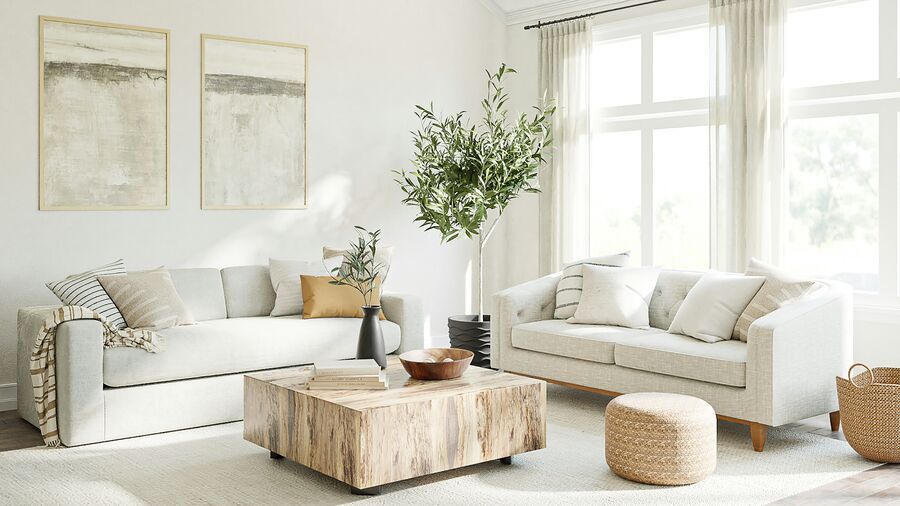
Soft colours: the Wabi-Sabi essence incarnate
A sofa in beige, grey or moss green fabric, for example, would be an ideal choice for a living room designed according to Wabi-Sabi principles. These soft colours blend harmoniously with other decorative elements in the room, such as linen cushions, natural fibre rugs and works of art inspired by nature. Incorporating a sofa in earthy, soothing colours creates a welcoming, comforting space where you feel at one with your surroundings.
The shapes
The shapes in a Wabi-Sabi space are simple, organic and inspired by nature. Soft, rounded lines evoke the fluid movement of natural elements such as tree branches, polished pebbles and clouds in the sky. Furniture and objects with asymmetrical and irregular shapes add a dimension of charm and character to the space, evoking the beauty found in imperfection and irregularity.
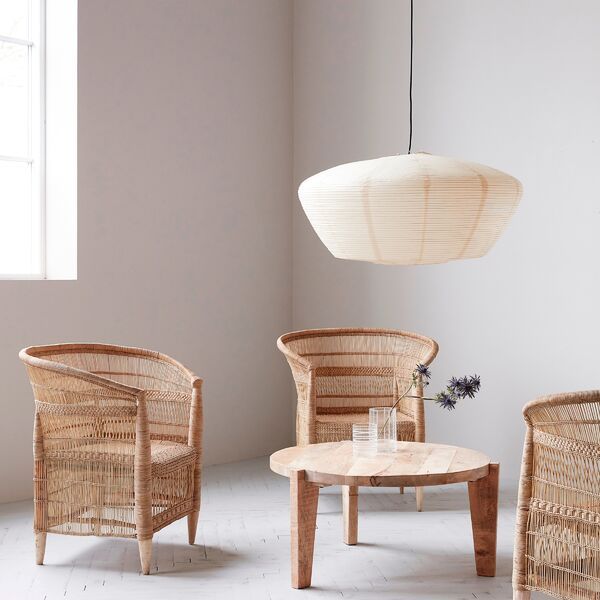
Organic shapes
The importance of light
The light in a Wabi-Sabi space is soft, diffused and changing, reflecting the subtle nuances of nature. Rather than using bright, direct light sources, the emphasis is on natural light filtered through light curtains and frosted glass windows. Candles, subdued lamps and lanterns create a warm and welcoming atmosphere, evoking the soft glow of dusk in the night. This soft, changing light creates an intimate, contemplative atmosphere, inviting relaxation and reflection.
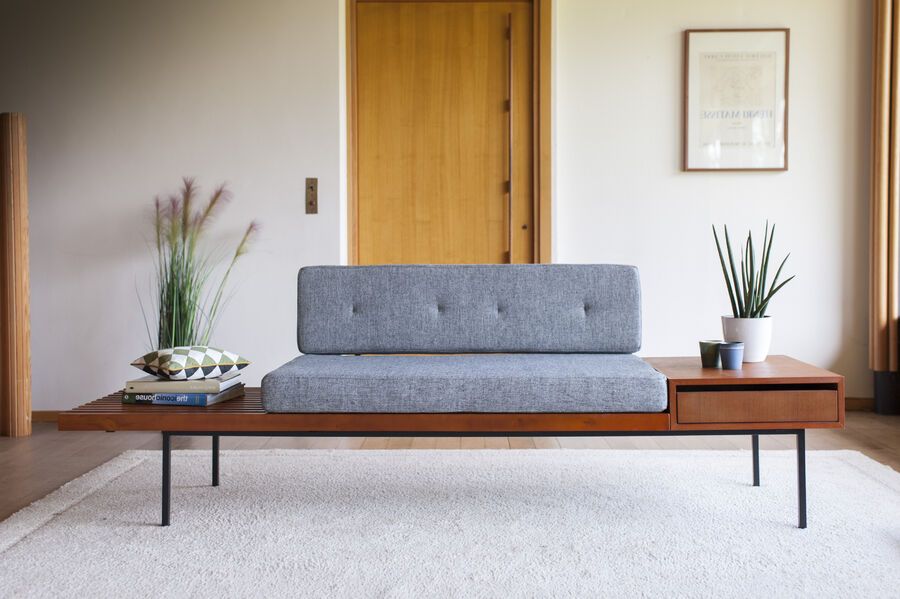
Wide bench with drawer Inez for a wabi-sabi atmosphere
By embracing the principles of Wabi-Sabi, we discover an approach to life and design that celebrates the beauty of imperfection, simplicity and the ephemeral. From its ancestral origins to its influence on contemporary Japanese culture, Wabi-Sabi transcends simple aesthetic concepts to become a genuine philosophy of life. By designing our spaces with natural materials, soft colours, organic shapes and gentle light, we create environments that inspire calm, tranquillity and connection with nature. Whether in our homes, our workplaces or our relationships with others, Wabi-Sabi reminds us of the importance of living simply, accepting imperfection and appreciating each of life's fleeting moments.
